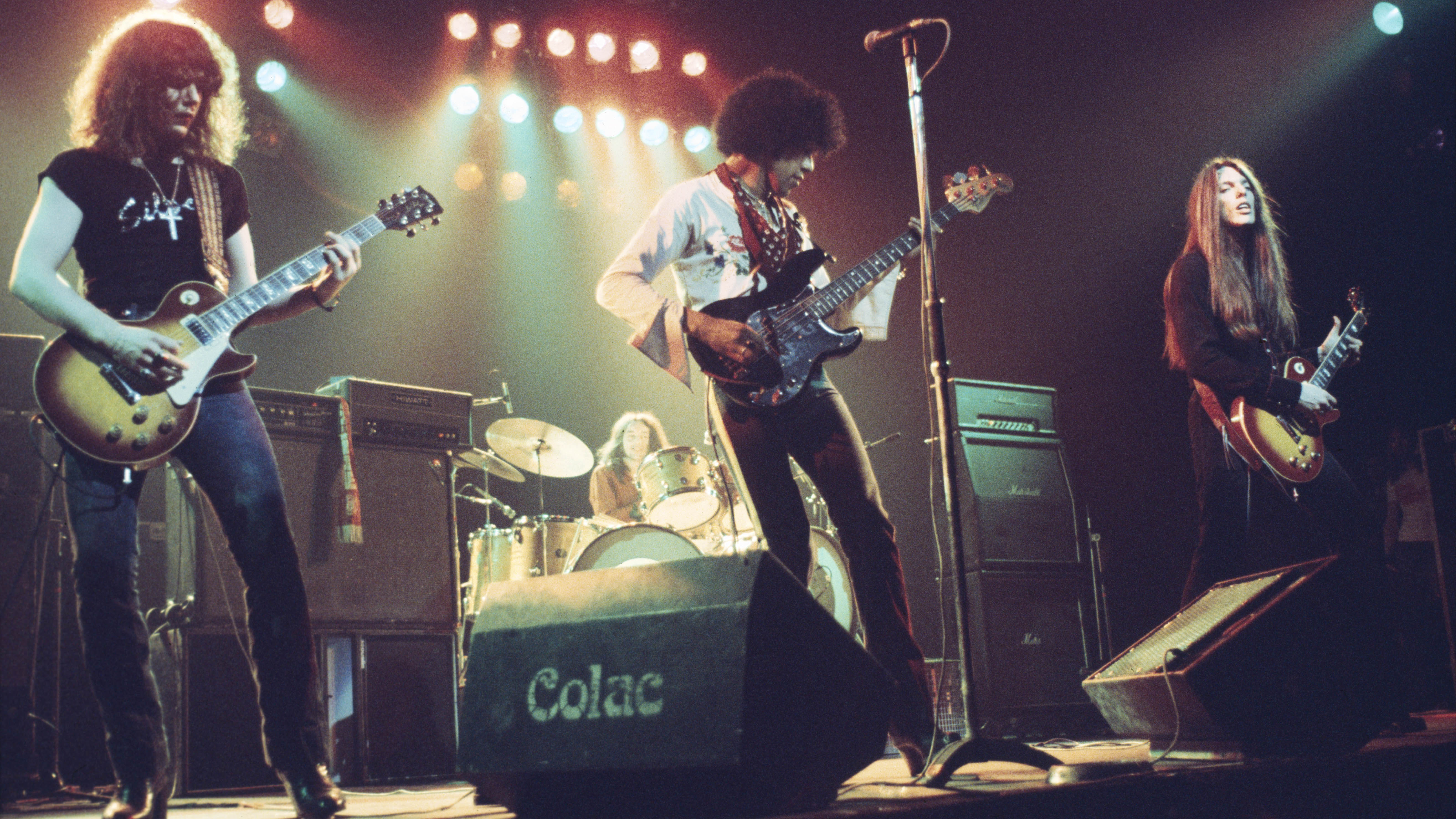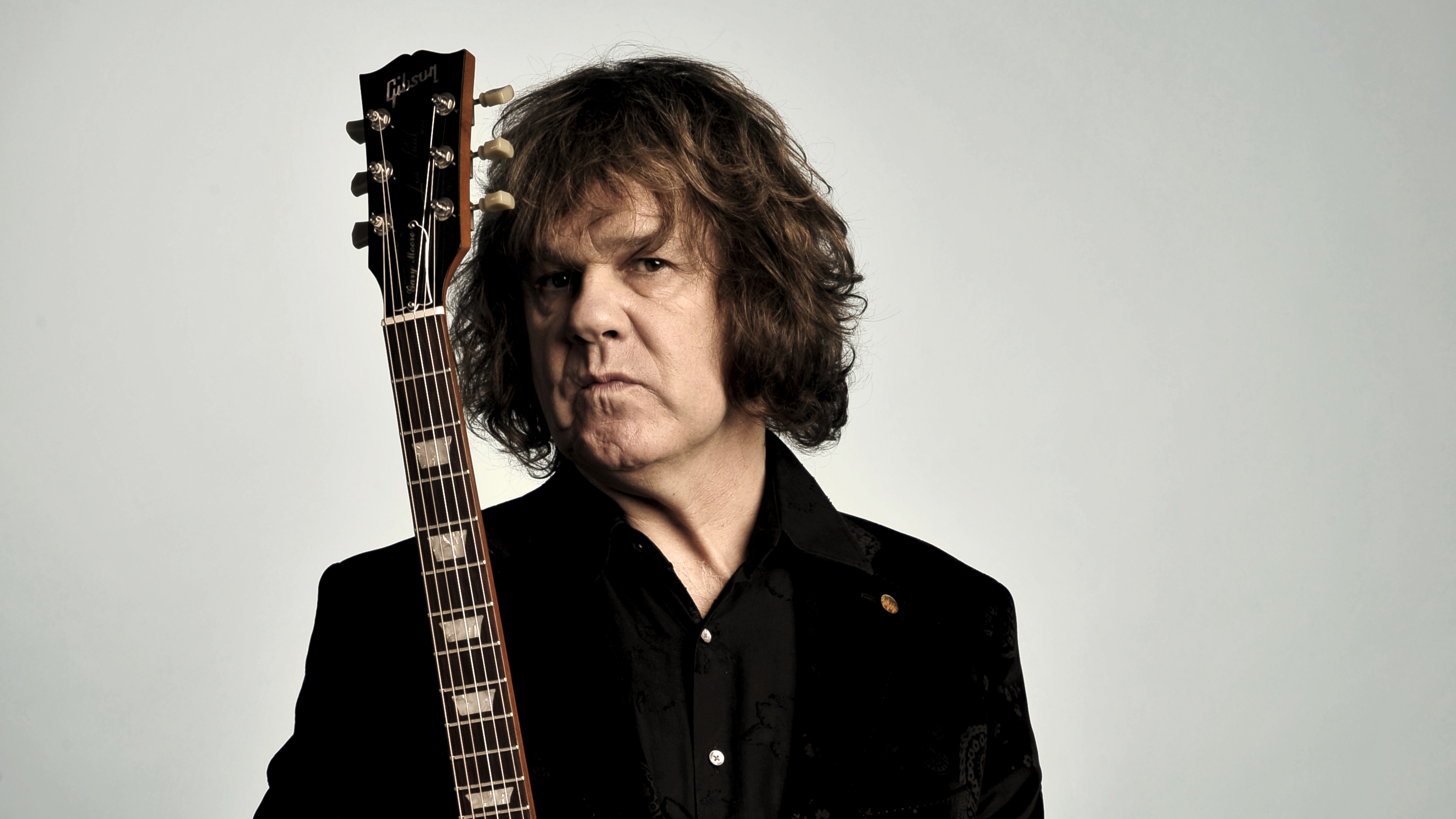6 songs guitarists need to hear by… Thin Lizzy
Phil Lynott's band left a sprawling and glorious legacy with an all-star cast of guitarists – here's where to start

Led by a man of Brazilian and Irish parentage, the unique Phillip Lynott, Thin Lizzy are easily one of the best-loved rock bands of the seventies and eighties, and their back catalogue is studded with gems to unearth and devour.
Laidback Californian guitarist Scott Gorham and the criminally-underrated drummer’s drummer, fellow Irishman Brian Downey were ever-present members alongside the striking frontman in the post-Eric Bell lineup of Lizzy. And such is the contrast between the styles of the numerous guitarists to have graced the line-up since 1973 – Gary Moore, Brian Robertson, Snowy White and, believe it or not, Midge Ure to name but four – there’s much for any player to winkle out from the songs.

Great though the music is, the band tended to shoot itself in the foot just as the big time beckoned, be it Robertson severely damaging his hand in a bar fight the night before the band were due to leave for an American tour, or Moore going one step better by walking out halfway through another Stateside trek.
Throw drugs into the mix and it’s maybe no surprise they never made it anywhere near as big as their potential surely demanded; with songs this good they should have ruled the roost for decades.
If by some strange happenstance you’re unaware of The Boys Are Back in Town, then we heartily recommend that that be your starting point. But subsequently? Try these on for size.
1. Dancing In the Moonlight (It’s Caught me in its Spotlight) – Bad Reputation (1977)
This sensuously slinky song, strewn with finger-snaps, jazzy chops and some wonderful drumming, is so unlike anything a European rock band was supposed to do it’s a wonder it was accepted by the notoriously fickle audiences of the time.
However, it owes its enduring popularity in part to both these unusual stylings and the engaging manner in which Lynott tells the story through his superb lyrics. What’s more Tony Visconti’s intimate production allows you to clearly hear the drums creaking and Lynott inhaling between lines, adding to the intimacy.
Want all the hottest music and gear news, reviews, deals, features and more, direct to your inbox? Sign up here.
Peppered throughout with the saxophone of Supertramp’s John Helliwell, the rhythm guitars are restrained, clean and to the point. Gorham’s solo is well worth spending some time with too as it features many of his trademarks; a lovely full tone, George Benson-style sliding octaves, that shimmering vibrato, and phrases that are the perfect accompaniment to the main melody.
It’s one of Lizzy’s best loved tunes, and it’s interesting to note that the parent album Bad Reputation was probably the band’s last throw of the dice, one that, finally, came good thanks to Lynott’s songwriting prowess.
“Phil would spend more time on the words because he found the music not that difficult,” recalled Gary Moore.“They were very simple songs. He’d play you Dancing in the Moonlight on the acoustic guitar and you’d go, ‘Is that it?’ Then you’d hear the finished thing and understand what he’d been so enthusiastic about because he was hearing it as the finished thing in his head.”
We could probably all do with a long, hot summer night right now, and this is a genuine feelgood song.
2. Emerald – Jailbreak (1976)
Lizzy’s music often bears Irish and Celtic favours sprinkled in amongst the rock guitars and there are few better examples than this absolute classic from what is arguably the band’s best studio album. Ushered in with Downey’s pattering hi-hat and brooding bass drum, Lynott’s smoky vocal and sneering delivery add weight to the atmospheric narrative, and the song is a cornucopia of stunning guitar work.
One of Lizzy’s musical cornerstones was the inventive use of twin lead guitar lines and the runs here neatly define the technique. The studio version of the song allows the intricacies to be more easily deciphered than the numerous live renditions that are available, and note how Lynott’s bass keeps the two guitars in check.
The solo section is particularly noteworthy as it sees the guitarists trade licks with tones embellished with subtle effects - a wah for Robertson and a phaser for Gorham – before Robbo really lets fly on his own.
“[Emerald] was a riff that Phil had,” explained Gorham. “It's got the real Irish-y feel in it. Brian Robertson and I came up with the harmony guitars [but] the main riff came straight out of Phil. It's a song about ancient times in ancient Ireland, talking about the warring clans and all that."
3. Jailbreak – Jailbreak (1976)
Much like the intro to Free’s All Right Now and the drum pattern to Rosanna by Toto, there’s a little skip in the main riff to Jailbreak that can be missed by less attentive players but it does need to be in there so that the groove established by Downey’s hi-hat is maintained. It’s all about the fine margins…
That aside it’s mostly a traditional rock song in the classic Lizzy vein. Lynott is wholly believable as the lag with his eye on escape from incarceration and the perfectly-judged breakout section, complete with sirens and alarm bells, ratchets up the tension still further. Robertson uses occasional wah-shaped licks to inject dynamics but, unlike live renditions, there’s no Gorham solo to speak of, which is intriguing.

“Jailbreak was our third [release] for the label and it really was make or break,” explained Gorham. “If it hadn’t sold then I’m sure we’d have been dropped and who knows what would have happened.”
Great though the studio version of Jailbreak is, its position as the opener to the seminal live album Live And Dangerous has assured the song’s longevity. Always mentioned in conversations regarding rock’s best ever live albums, L&D still stands up today despite the lingering controversy, precipitated mostly by producer Tony Visconti, that it was more of a studio construction than anything else, a position that’s always been refuted by the band.
“No new solos were done, nothing apart from small being errors ironed out,” Downey assured us. “Almost everything you hear is genuinely live. I’m sure Tony believes what he says, but he is wrong.”
4. Waiting For an Alibi – Black Rose: A Rock Legend (1979)

With Lynott’s sparring partner from the old country Gary Moore now on board in place of the errant Robertson, the stage was surely set for Lizzy’s long-awaited ascension to rock greatness. With an enigmatic frontman, two great guitarists and a new album, the stunning Black Rose, to get behind what could possibly trip them up now? Famous last words, as it turned out.
Alibi… was the record’s lead single and Moore’s tight and strident style led to an improved focus to the music, ably demonstrated by the opening riff that’s composed of weaving twin guitars that sits upon a flanger-laden bass.
The rhythm guitars under the verse sway from staccato stabs to looser chords and back again, adding dynamics in spades; the same trick is used beneath Gorham’s solo too and never has a rather sordid tale of a bookie with a gambling problem been so appealing.
“The big thing for us was: yeah, okay, it sounds good, but is it going to translate to a stage?” Gorham reflected years later. “That was always in the back of everyone’s minds, that we also needed to write these songs for the stage, because you gotta go out and sell this stuff and you gotta reproduce it every night.”
Sadly, for Lizzy to do that efficiently the music needed two guitarists and Moore bewilderingly decided to bail halfway through the US leg of the Black Rose tour after Lizzy had performed at the Day On The Green Festival in Oakland on 4 July 1979.
The band gamely played the next few shows as a somewhat shell-shocked trio before Lynott roped in his friend Midge Ure as an emergency replacement, who spent the flight over from Blighty frantically learning Moore’s guitar parts.
The amiable Ultravox man, who described his tenure as ‘… my Judy Garland moment…’, did well by all accounts but after a show in Kalamazoo, Michigan, in early August they succumbed to the inevitable and pulled out of the tour. Ure stayed with the band for a few more shows that year, mostly in Japan, but with Lizzy’s reputation in America now in tatters any lingering chances of them ever cracking that lucrative market disappeared for good.
5. Chinatown – Chinatown (1980)
After Moore’s departure the band really need a steadying influence to take up the position stage right as the situation elsewhere in the line-up was becoming increasingly flaky, so they turned to Englishman Terry ‘Snowy’ White after Gorham had been impressed when seeing him play with Pink Floyd during their 1977 In The Flesh/Animals trek
With a love of the blues and a laidback demeanour, we can only guess at the relief his bandmates must have felt when he came on board after years of having to endure the dramas instigated by messers Moore and Robertson.
Chinatown has a lovely sinuous feel to it and the addition of modulation effects to the rhythm and lead guitars does give the music a sheen. White’s lengthy solo is certainly bluesy in nature and his looser style suits the music nicely, and even an addled Gorham almost falling off during his own workout seems to work.
“I had the riff at the beginning of Chinatown and a few other bits and pieces.” White recently told Rolling Stone. “I liked Thin Lizzy. They were a great band [and] Phil was a fantastic frontman, but I didn’t really fit properly; it wasn’t a comfortable time.”
Yet again a promising new horizon beckoned for our heroes but, as ever, it was not to be. White left in 1982 and went on to have a top ten single a year later with the lilting Bird of Paradise, while the remaining trio, with options dwindling, decided to turn up the gain and go for broke with a new guitarist entering stage right.
6. Thunder and Lightning – Thunder and Lightning (1983)
With heavy drug use becoming a daily theme and yet another new guitarist, John Sykes, in the ranks, Thunder and Lightning could well have been a disaster. However, such was the new boy’s dedication and fire that he pulled his sozzled bandmates along by their guitar straps and although many of the resultant tracks were easily the heaviest the band had ever put its name to, the album is a riot.
The title track is whipped along by a monstrous riff comprising gloriously meatheaded chords that accompany Lynott’s machine-gun vocal, before an infuriatingly catchy chorus grabs you by the throat and shakes you into submission.
Gorham fires pinched harmonics from his Les Paul with all the freedom he can muster before Sykes takes centre stage with a breakneck solo of such velocity that, at one point, he actually overtakes the rhythm track. This was before he’d joined up with Whitesnake for the multi-platinum 1987 album so most rock fans were unaware of his ability to shred like a good ‘un and, while Lizzy die-hards found the heavier style difficult to swallow, T&L certainly cemented his reputation.
“[The songs] really suited John’s style, but it was a shock to hear the way he played,” said Downey. “He really ripped up the amps and was a very loud player.”
“I feel sorry for John” Gorham continued. “We knew that was going to be our last album. I don’t think we informed him because we couldn’t believe it ourselves, but it was definitely going down. He got short-changed on the whole thing.”
After a breathless UK tour which saw both Lynott and Gorham visibly struggling to keep it together each night (to which this writer can attest), Lizzy’s last hurrah was a show in Nuremberg on 4 September 1983. Tragically Lynott’s battered and bruised body could finally take no more and he died from heart failure and pneumonia less than three years later, on 4 January 1986.
“He was such an important part of my life, a good friend and mentor,” Downey remembers. “I would go to him for advice instead of my dad. He had such an amazing personality and as a musician, he was so dedicated.”
A true rock icon and a genuine one-off, Lynott is still missed today and looking back at the way in which Lizzy petered out, it seems a terrible waste. At least we still have the music and, as these tracks prove, what music it is.
6 songs guitarists need to hear by… Iron Maiden
Simon Bradley is a guitar and especially rock guitar expert who worked for Guitarist magazine and has in the past contributed to world-leading music and guitar titles like MusicRadar (obviously), Guitarist, Guitar World and Louder. What he doesn't know about Brian May's playing and, especially, the Red Special, isn't worth knowing.